-
Posts
1,821 -
Joined
-
Last visited
Content Type
Profiles
Forums
Gallery
Events
Store
Posts posted by LCDRDATA
-
-
LCRDATA, did you stop by his booth to see the very ugly old disk he had there as the demo unit? He said that thing still got a decent reading that was a bit worse than the new ones, but not terrible. It was in a running reef tank for a year. He said the most frustrating thing for them was the continued skepticism that it does what they say it does. I'd be frustrated at that too.
I only saw it in passing - at that point I didn't have time to linger and discuss. But it doesn't surprise me. I suspect if there were a way to "clean" the sensor without replacing the disk they could go longer, although a year would have to be really pushing it. I can understand people being skeptical, but having the background to understand the technological approach, I'm only skeptical as to the ability to make room for it in my budget.

-
Yay! I think the bag with the wrasse in it (with your name on it) was total confirmation! Awesome holding service by Shannon and Jim too
 .
.We were happy to do it.
-
I was at the presentation and talked to them afterwards. The physical chemistry aspects of the technology look to be able to do what they're wanting it to, and it seems they're being careful about not overpromising what they can actually do and being transparent about what they can't (i.e., magnesium and phosphorus). I wish I could get the data locally without going to "the cloud," but then I'm a luddite who still doesn't have a smart phone
 . At least the data will be easily exportable. I also suspect that folks will try - likely with reasonable success - to stretch the life on the disks to six weeks or so. Admittedly the accuracy will drop ("your mileage may vary"), but for folks with tanks that are already pretty stable that may not be critical.
. At least the data will be easily exportable. I also suspect that folks will try - likely with reasonable success - to stretch the life on the disks to six weeks or so. Admittedly the accuracy will drop ("your mileage may vary"), but for folks with tanks that are already pretty stable that may not be critical. 
-
Thanks,
PILES of ever so slightly used equipment and some great livestock are available this weekend. The fish still need to go through our normal 2 - week Vet supervised QT protocol.
Ditto to all the compliments, awesome job at MACNA. Are you going to list/post somewhere the after-MACNA equipment and livestock - including the fish? It won't be easy, but for the right fish I'll wait
 .
. -
This was posted today http://reefbuilders.com/2015/07/29/answers-top-10-questions-mindstream/
In addition, Mindstream is currently scheduled at MACNA for Workshop #6 (2:45-3:30) on Saturday.

-
I have a 93 cube and I've had a mandarin for about 3 years now. I was thinking about adding a snowflake eel. I've read multiple reviews. Has anyone had this combo before. Did it work or was it a bad ending?
I haven't had that combination, but I do have a large snowflake moray. The bad news is, he has been known, on occasion, to eat a mandarin-sized fish. The good news is, with one possible exception, he's only eaten fish that tried to bully him. Specifically, a couple of dwarf angels/butterflies who decided it was a good idea to swim up and start smacking him in the face with their tail -- repeatedly. After several days of this aggressive behavior, one day they were gone. From this admittedly limited data set, I think you should be OK if your mandarin doesn't tend toward the suicidal, and particularly if you get a small eel that will be accustomed to the mandarin as it grows.
-
You know the story... haha.. banished to the sump... traded to LFS... hard life for a fish that chomps on gorgonians..

Well ... shoot.

Did it limit its depredations to gorgonians, or was it an equal-opportunity polyp muncher?
-
I will update for sure... fingers crossed because he is an awesome little fish... I have always loved the unique fish like puffer and triggers... he reminds me of similar behavior... really cool...
I thought I'd resurrect this thread for an update - how are things going with the ORA filefish?

-
I just saw this; I'll need to go back and think about where things went, but I did finally get this stabilized and cleaned up.

-
Black- solid or with some light orwd stripes?
Pretty much solid, as far as I can tell.
once they've become adults, they generally turn black. I have a tank with 17 of them and they're all black now.
Well, that's disappointing.

-
I've had a pair of lemon chromis in my cube for a year or so now, and in the last few weeks they've turned black (or at least very dark). No recent changes to the tank - parameters, configuration, occupants, etc. - that I can think of to explain it. They're active and eating well, I haven't noticed any behavior changes, they've just changed color. Any ideas what's going on? Thanks!

-
-
When I used to run into them years ago in Hawaii, the conventional wisdom recommended a paste of meat tenderizer -- it seemed to work.
-
In my experience, Mexican (vice zebra) turbos will eat GHA, although the speed/amount varies by individual snail (i.e. it seems that some like it a lot more than others).
-
She's Alive!!

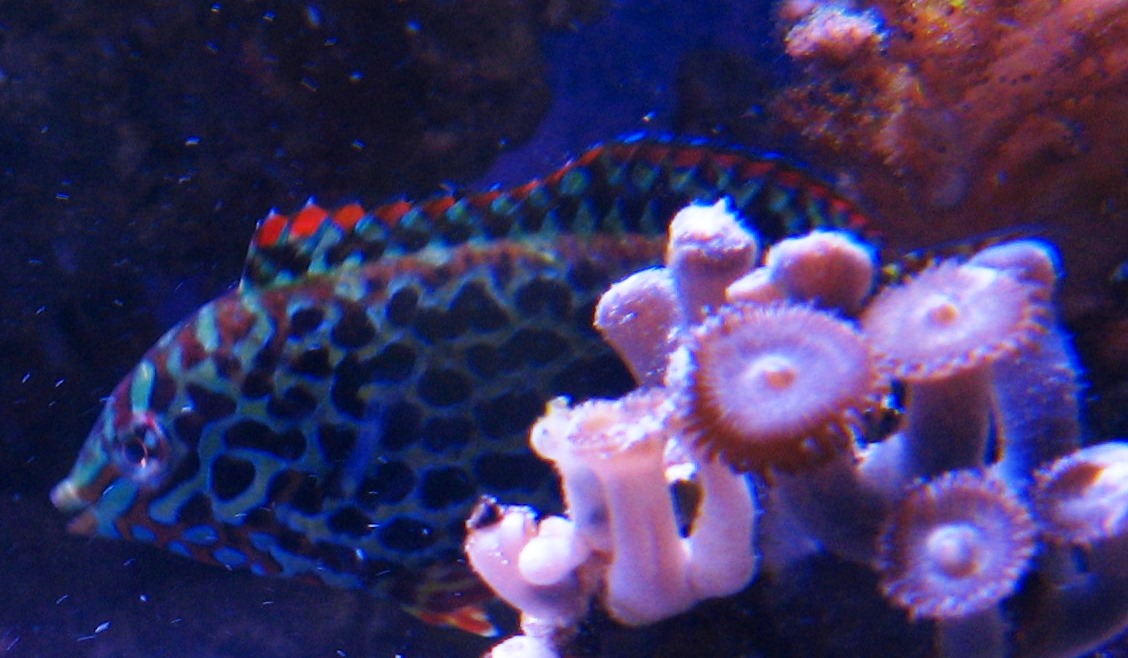
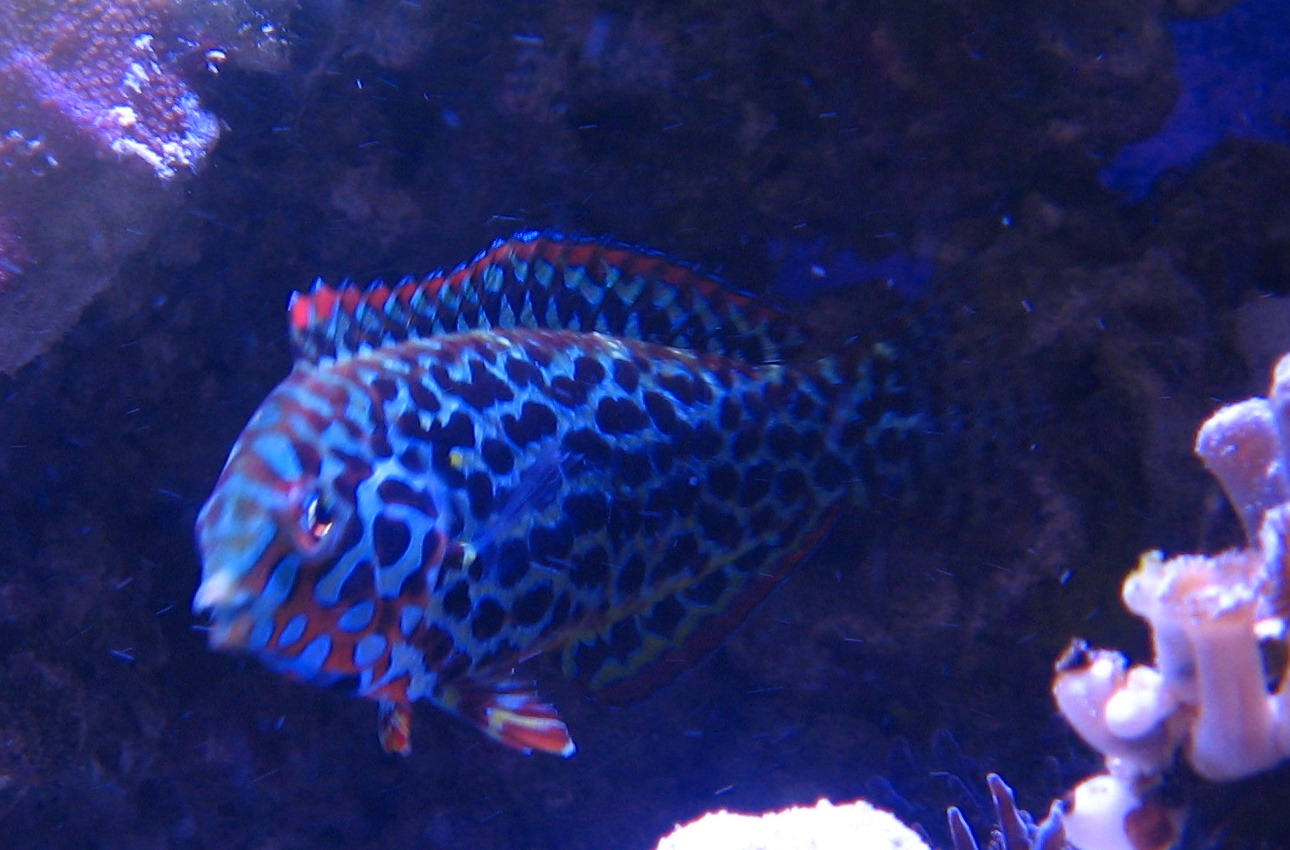
Not the greatest quality, but good enough for this purpose.
-
OK, it sounds like I'm well within the "too early to worry about it" window - which I suspected but wanted to be sure about. Thanks all!

-
On Saturday I introduced my new leopard wrasse (female) into my tank. She perched under my hammer coral for about a minute and a half and then dove under the sand bed. I haven't seen her since. We had a leopard wrasse in the past, so I know they bury themselves to sleep or when they are stressed. My question (hence the subject of the thread) is when should I get worried? - i.e., how long is too long? I know pretty much where she went in -- although there's obviously no guarantee she's still in the same place -- and I suppose I could probe around, but I don't want to just add to the stress level. The tank is covered (I know they can be jumpers), and there's no sign she's managed to carpet surf, so I'm assuming she's still OK and in the tank. When do I start seriously questioning that assumption?

-
I had a similar problem with my new sump for my 75 gallon DT. What I ended up doing was removing the front center brace (it was attached with pocket screws), putting the sump in place, and then putting the center brace back. Yes, it was a royal pain to do, but it was doable, and working in the sump around the brace isn't too bad. Is that something that would work for you?
-
Interestingly enough, I saw a selection (not a huge variety, but a couple of colors in a couple of sizes) at the local Home Depot a week or so ago.
-
The GFO is significantly harder than a lot of carbon and putting them together in any situation where there's tumbling may cause the carbon to abrade. ...
Note also that the article says that, in the experience of others, simply taking the carbon offline may not quickly solve the problem, to which the author postulates that removing the source does not remove the fines that may remain in the system.
The carbon that was used in the study was lignite-based carbon, which is fairly common in the hobby. It was postulated that softer carbon might cause more problems, while harder pelleted types might abrade less easily.
A lot of aquarists use carbon without HLLE showing up in their tanks. (I'm among this group, having used carbon for a decade without problem.) Herndal says that it could just be a better carbon that was used, better rinsing, etc. For many years now (since early 2011), I've used BRS Rox carbon - a small, hard pelleted type. But, before that, I used a granular lignite supplied by a friend that was once in the business. In all cases, I always thoroughly rinsed the carbon until the water ran through it clean. Rox, for what it's worth, rinses clean very quickly and is one reason why I like it.
To clarify, I was running the carbon as the top layer in the reactor, with a layer of Seachem Phosguard -- a white pelleted resin, NOT GFO -- beneath it, and at a low flow rate to minimize any tumbling. However, I think this time around I ended up with a lower-quality carbon as well, and between that and the apparent reality I should probably pull the carbon out of my reactor. I looked over the abstract/"layman's" version of the study you referenced, and the experimental design (and results) seemed fairly rigorous. Hopefully once I pull it the problem should clear up (at least in terms of limiting further damage) quickly, as I'm skimming well and running a pair of 200 micron filter socks. If I choose to run carbon again, I'll stick to something like the BRS Rox.
I don't know about the nutrition aspect that's being suggested as to its efficacy for treatment, but better nutrition never hurts. The 2011 report that I pointed to only implicated carbon as a cause but not the mechanism. Also, while it says that carbon is a cause, it doesn't say that carbon is the ONLY cause. There have been lots of ideas over the years. Keep in mind that I've never had to deal with HLLE in my tanks or to treat a fish with the condition. I'm only relaying what information seemed to be "groundbreaking" back in 2011 after many years of guessing in the hobbyist ranks. Hopefully, this points you in the direction of further research and direction to see if you can stop the erosion and restore some health to this fish.
Note that the post that I pointed to indicated that 19% of a respondent group found that they got a "complete reversal of HLLE by discontinuing the use of carbon filtration." (I assume that this means that the erosion stopped and was reversed, and that a healthy looking fish resulted.) The experiment, performed by Jay Herndal, Curator of Fishes at the Toledo Zoo, included diet as a variable and found that a good diet did not prevent the HLLE in the fish that were studied. Further, after carbon removal, diet did not seem to completely restore the overall health of stricken fishes. (It didn't say anything about the cosmetic effects of a good diet, though.)
As far as diet goes, I'm feeding half a sheet of purple seaweed daily, along with New Life Spectrum THERA +A pellets and homemade frozen comprised mostly of blended tail-on organic shrimp, silversides, green nori, and Kent Marine Chromaplex. It's only after I started feeding this frozen (after finally running out of Jan's
 ) that my clowns started laying eggs, so at the risk of invoking a post hoc fallacy, I think I'm doing something right food-wise in the tank at large, anyway.
) that my clowns started laying eggs, so at the risk of invoking a post hoc fallacy, I think I'm doing something right food-wise in the tank at large, anyway. -
Looks like HLLE. Are you tumbling carbon in a reactor? A few years ago, microscopic carbon fines were implicated in HLLE (according to some paper that was published).
http://www.coralmagazine-us.com/content/activated-carbon-hlle-smoking-gun-found
I am running a combination (layered) of carbon and phosguard in a small reactor, but not at a flow rate that there is significant tumbling. Do you think I should pull the carbon? Any other treatment suggestions?
-
One thing you don't want to do is get into a see-saw of large, rapid pH swings. I don't think the temperature would make such a huge difference. I'd make sure your DT powerheads are causing some surface disturbance (for gas exchange), and it shouldn't hurt to add an airstone or two. As far as the sump is concerned, I think you would be safe adding a small amount of vinegar -- that's the safest organic acid I can think of -- to bring the pH down. Just do it a little at a time, make sure there's been full mixing/circulation, and then test. After that, then start your circulation once the pH is equalized between DT and sump. Only then do you want to work on gradually bringing the whole-system pH to whatever end value you want. In the future, you might want to have some kind of buffered product (I personally use and like Kent Marine's Superbuffer dKH, but there are others as well) on hand to help even out this kind of a swing. It keeps my pH more or less right at 8.3. Good luck!
-
OK, it's been longer than I intended, but here are two shots of the fish I just took, plus one from not quite two years ago. I'm thinking (and not in a positive way) HLLE? Agree/disagree/any recommendations?
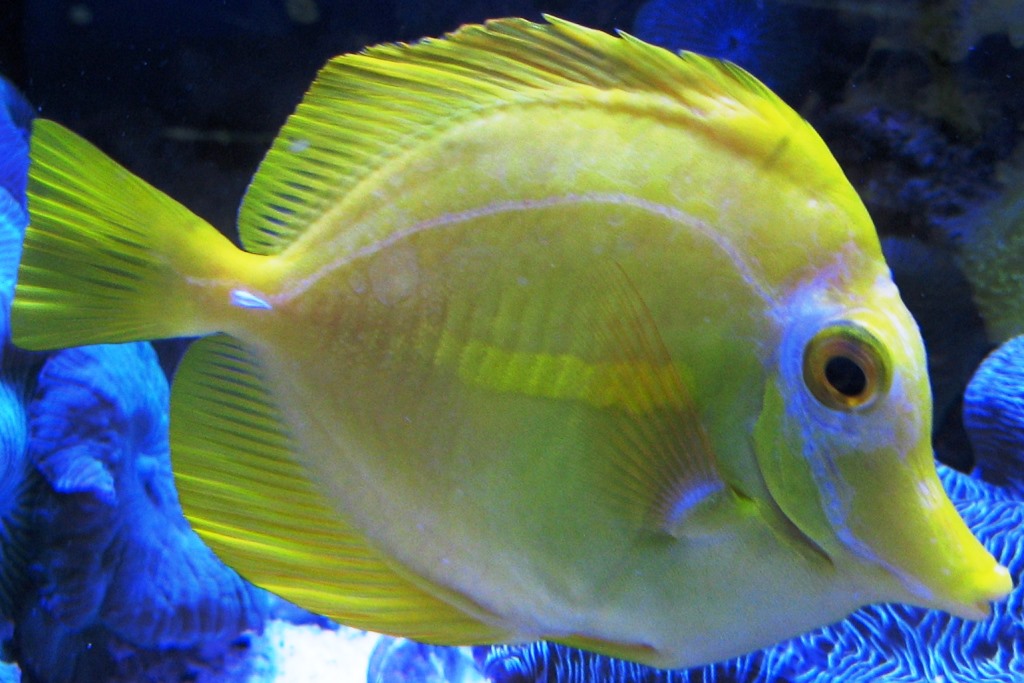
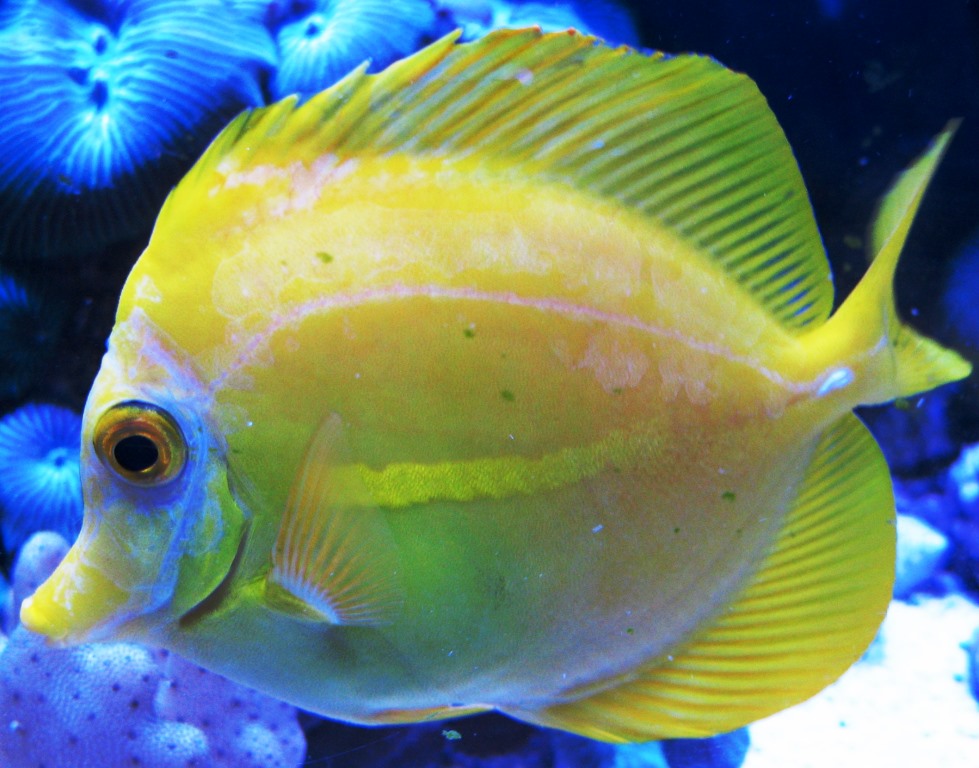
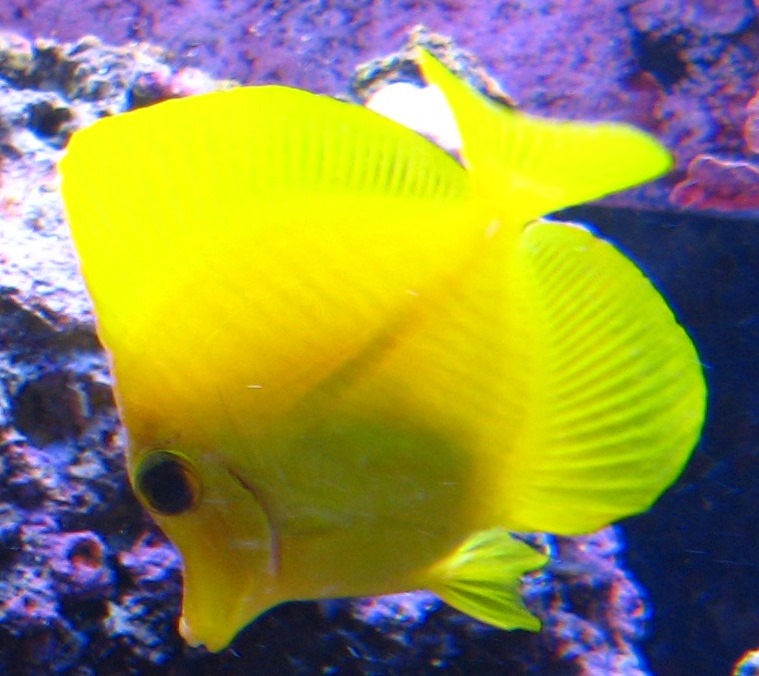
-
I've also been seriously thinking about that ORA whitespot filefish, so will be watching eagerly for updates!





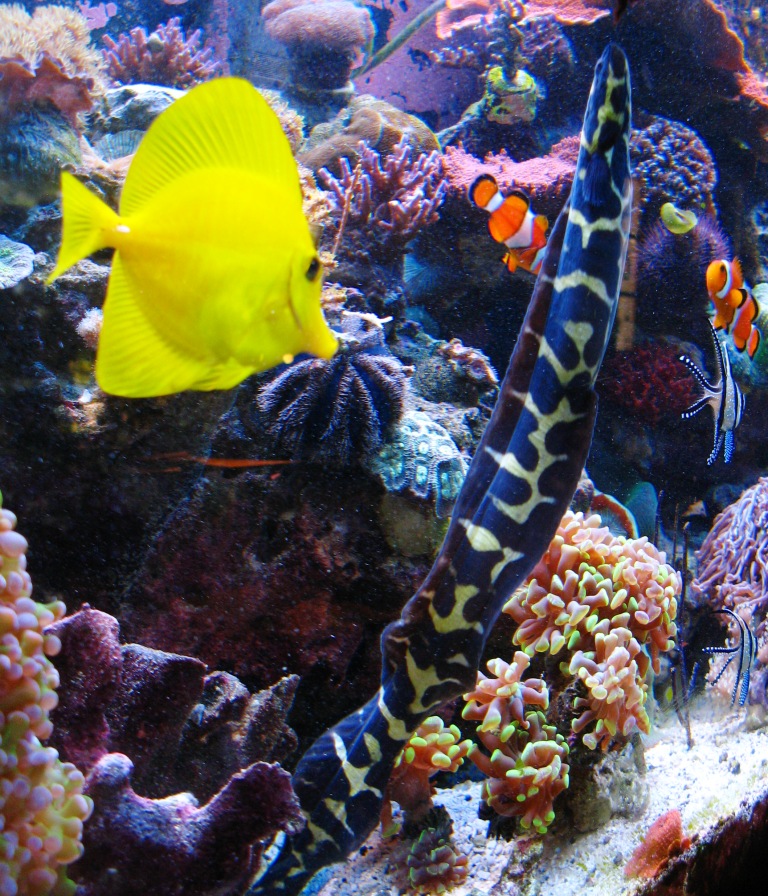
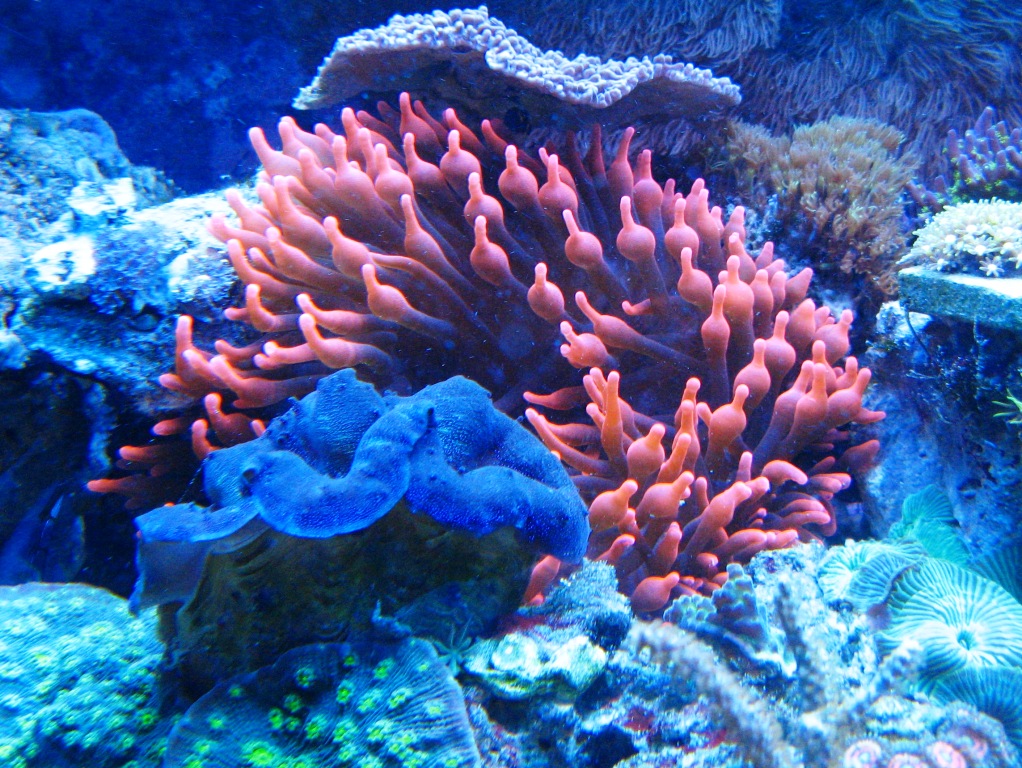
Gorgonian or a hitchhiker?
in General Discussion
I have an encrusting gorgonian that looks a lot like that. The bad news is, if it's the same as I have, it's liable to eventually crowd out those zoas.